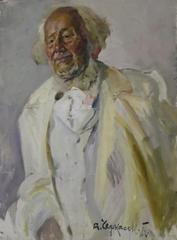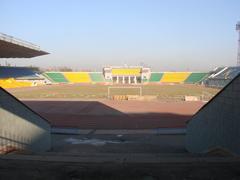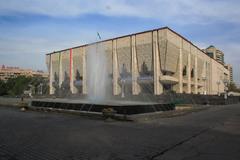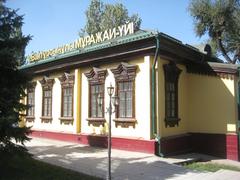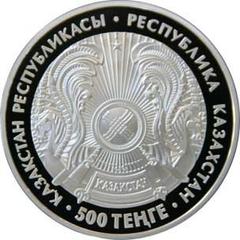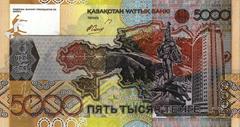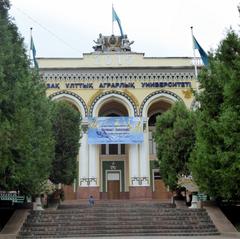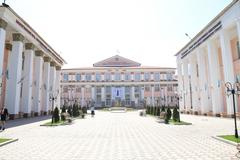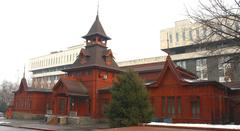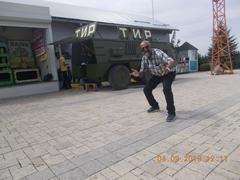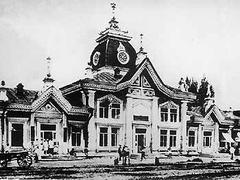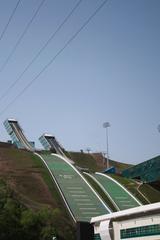
Zhetysu Visiting Hours, Tickets, and Historical Sites in Almaty, Kazakhstan
Date: 04/07/2025
Introduction
Zhetysu, meaning “Seven Rivers,” is a vibrant region in southeastern Kazakhstan steeped in historical significance, natural beauty, and cultural diversity. Once a nexus of the Great Silk Road, Zhetysu has been shaped by centuries of interaction among Turkic, Persian, Mongol, Russian, and Soviet civilizations (explorekazakhstan.net; GreenX Tour). Today, the region is renowned for its archaeological wonders, UNESCO-listed sites, dynamic urban neighborhoods in Almaty, and breathtaking landscapes like Altyn-Emel National Park and Kolsai Lakes.
This guide provides detailed information on Zhetysu’s historical sites, natural attractions, visiting hours, ticketing, accessibility, and travel tips. Whether you’re planning to explore ancient petroglyphs, attend cultural festivals, or embark on outdoor adventures, this resource will help you make the most of your journey through Zhetysu and the Almaty region (Astana Times; ShootPlanet).
Table of Contents
- Historical Overview of Zhetysu
- Sacred Sites and Cultural Heritage
- Practical Visitor Information
- Travel Tips and Nearby Attractions
- Modern Zhetysu: Culture and Diversity
- Key Historical Landmarks and Sites
- Natural Wonders of Zhetysu and Almaty Region
- Biodiversity and Conservation
- Geological and Archaeological Significance
- Cultural Festivals and Traditions
- Cuisine and Hospitality
- Museums and Cultural Institutions
- Adventure and Outdoor Activities
- FAQ
- Conclusion and Practical Tips
- References and Further Reading
Historical Overview of Zhetysu
Early Settlements and the Silk Road Era
Zhetysu’s fertile valleys and abundant rivers made it a cradle of early civilization. Archaeological evidence dates settlements here to the Bronze Age, with the region flourishing as a strategic corridor along the Silk Road (explorekazakhstan.net). The Tamgaly and Eshkiolmes petroglyphs, dating back to the second millennium BCE, offer invaluable insights into the spiritual and daily life of ancient peoples. The Tamgaly-Tas site, on the Ili River, is notable for Buddhist petroglyphs and Tibetan-Dzungarian inscriptions, reflecting the area’s religious diversity from the 17th to 18th centuries.
Zhetysu in the Age of Empires
Throughout the medieval period, Zhetysu was successively ruled by the Western Turkic Khaganate, the Karluks, the Kara-Khanids, and, following the Mongol conquest, the Chagatai Khanate. The region played a pivotal role in the Kazakh Khanate’s formation during the 15th century, becoming a stronghold for nomadic culture and resistance to Dzungar invasions. The Saki burial mounds are enduring testaments to the area’s rich steppe civilizations (explorekazakhstan.net).
Russian Imperial Expansion and Soviet Transformation
In the 19th century, Zhetysu became part of the Russian Empire, leading to the foundation of Verny (modern Almaty) in 1854 and the onset of urban development (oneintheorangejacket.com). Russian and European architectural influences can still be seen in Almaty’s historic buildings, such as Zenkov Cathedral and the old railway station (visitalmaty.kz). During the Soviet era, Almaty rose as the capital of the Kazakh SSR, and the Zhetysu district (formerly Leninsky) was created, reflecting the city’s rapid industrialization and modernization (almaty.invest.gov.kz). The district was renamed Zhetysu in 1995, restoring its historical identity.
Sacred Sites and Cultural Heritage
Zhetysu boasts a wealth of sacred sites, including mausoleums, ancient settlements, and natural landmarks (astanatimes.com). The Museum of the History of Almaty, located in the Zhetysu district, houses over 35,000 artifacts illuminating the area’s evolution from nomadic times to the present (visitalmaty.kz). Other notable sites include the Saki and Usun burial mounds, medieval Silk Road cities like Talhir and Koilyk, and monuments to Kazakh heroes (“batyrs”) and judges (“biys”) (Astana Times).
The region’s culture reveres nature and ancestry, symbolized by the shanyrak (yurt’s roof center) and argali (mountain sheep) on its coat of arms (GreenX Tour).
Practical Visitor Information
Visiting Hours
- Museums and Archaeological Sites: Generally open 9:00 AM to 6:00 PM daily; some close on national holidays.
- National Parks: Typically open 8:00 AM to 6:00–8:00 PM, with seasonal variation.
- Religious Sites: Open during daylight hours; check with local authorities.
Tickets
- Museums: Entry from 500–800 KZT; discounts available for students, children, and groups.
- National Parks: Entry fees 500–1,500 KZT; guided tours extra.
- Petroglyph and Archaeological Sites: Small fee (usually under 1,000 KZT); guided tours recommended.
Accessibility
- Museums and Modern Facilities: Mostly wheelchair accessible, with ramps and guided services.
- Archaeological/Natural Sites: Terrain may be challenging; wear appropriate footwear and prepare for uneven ground.
Guided Tours
- Widely available in multiple languages; advance booking recommended, especially for UNESCO sites.
Getting There
- Zhetysu is accessible by car or public transport from Almaty. Private tours and 4WD vehicles are recommended for remote areas.
Travel Tips and Nearby Attractions
- Best Time to Visit: May–June and September–October for ideal weather.
- Cultural Etiquette: Dress modestly at religious and rural sites; always ask before photographing people.
- Travel Logistics: Carry cash for entrance fees; verify opening hours during holidays.
- Safety: Acclimatize to altitude, be prepared for changing weather, and stay on marked trails in parks.
Modern Zhetysu: Culture and Diversity
The Zhetysu district in Almaty exemplifies the city’s cosmopolitan spirit, blending historical architecture with vibrant contemporary culture (visitalmaty.kz). Annual festivals such as Nauryz (spring equinox), Almaty Film Festival, and Tasty Almaty food festival offer immersive experiences in Kazakh hospitality, cuisine, and the arts (visitalmaty.kz).
Key Historical Landmarks and Sites
- Tamgaly-Tas: UNESCO-listed Buddhist petroglyphs; open 9:00 AM–6:00 PM (explorekazakhstan.net).
- Eshkiolmes Petroglyphs: Ancient rock art near Taldykorgan.
- Saki and Usun Burial Mounds: Early Iron Age kurgans.
- Museum of the History of Almaty: Artifacts from nomadic to Soviet eras (visitalmaty.kz).
- Abylai Khan & Panfilov Streets: Historic thoroughfares lined with notable architecture.
Natural Wonders of Zhetysu and Almaty Region
Altyn-Emel National Park
- Highlights: Singing Dunes, Aktau and Katutau Mountains, rare wildlife (ShootPlanet).
- Hours: 8:00 AM–6:00 PM; entry 500–1,500 KZT (altyn-emel.kz).
Charyn Canyon
- Highlights: Dramatic red rock formations, Valley of Castles.
- Hours: 7:00 AM–8:00 PM; entry ~1,000 KZT.
Kolsai and Kaindy Lakes
- Alpine Lakes: Clear waters, hiking, horseback riding; Kolsai entry ~1,000 KZT.
Lake Alakol
- Therapeutic Waters: Open year-round, no entry fee; best from May–September.
Biodiversity and Conservation
Zhetysu’s protected areas are home to rare species like snow leopards, golden eagles, Persian gazelles, and kulan. Conservation efforts focus on preserving unique steppe, mountain, and wetland habitats (ShootPlanet).
Geological and Archaeological Significance
The region features some of Central Asia’s richest archaeological sites, including Tamgaly Tas, Ordakul (with 25,000+ petroglyphs), and ruins of Silk Road cities like Talgar and Koilyk (Astana Times; Evendo).
Cultural Festivals and Traditions
- Nauryz (March 21): Spring renewal festival with music, dance, and traditional foods (Adventure Backpack).
- Khansha Festival: Celebrates Kazakh heritage.
- Almaty Music and Art Festivals: Blend traditional and modern culture.
Cuisine and Hospitality
Kazakh hospitality—or “qonaqasy”—is central to Zhetysu’s identity. Sample dishes like beshbarmak, kazy, and kumis at local festivals and food fairs (CGTN).
Museums and Cultural Institutions
Zhetysu features over 20 museums and 1,000+ heritage sites, including the Museum of the History of Almaty and the Issyk Museum, which displays the famed “Golden Man” (Astana Times).
Adventure and Outdoor Activities
- Hiking & Trekking: Dzungarian Alatau, Ili River valley, Charyn Canyon.
- Horseback Riding: Trails through steppes and mountains.
- Birdwatching: Alakol wetlands (spring and autumn migrations).
- Eco-Tours: Wildlife watching and cultural immersion in Altyn-Emel and Kolsai parks.
FAQ
Q: What are the visiting hours for main attractions?
A: Most open from 8:00 or 9:00 AM to 6:00–8:00 PM, with some variation by season.
Q: Are tickets required for national parks and historical sites?
A: Yes; entry fees range from 500–1,500 KZT. Guided tours cost extra.
Q: How do I book guided tours?
A: Book in advance via local agencies or online tourism platforms.
Q: Is public transport available to major sites?
A: Limited; car rental or organized tours are recommended for remote locations.
Q: What time is best for birdwatching at Alakol Lake?
A: Spring (April–May) and autumn (September–October) migrations.
Conclusion and Practical Tips
Zhetysu offers a tapestry of history, nature, and culture for every traveler. Plan your visit by checking site-specific hours, booking tickets and tours in advance, and respecting local customs. For real-time updates, guided tours, and digital maps, download the Audiala app. Embrace the region’s living traditions, savor its cuisine, and discover why Zhetysu remains Kazakhstan’s historical and natural gem.
References and Further Reading
- Explore Kazakhstan – Archaeological Tour of Zhetysu
- GreenX Tour – Zhetysu Tours
- Astana Times – Book Discovers Historical Heritage of Zhetysu Region
- ShootPlanet – Kazakhstan Travel Guide
- Advantour – Zhetysu Attractions
- Altyn-Emel National Park Official Site
- Visit Almaty – Cultural Almaty
- One in the Orange Jacket – Almaty Travel Guide
- CGTN – Almaty: Kazakhstan’s Cultural and Tourism Gem
- Adventure Backpack – Almaty Events
- Welcome.kz – Zhetysu Oblast

